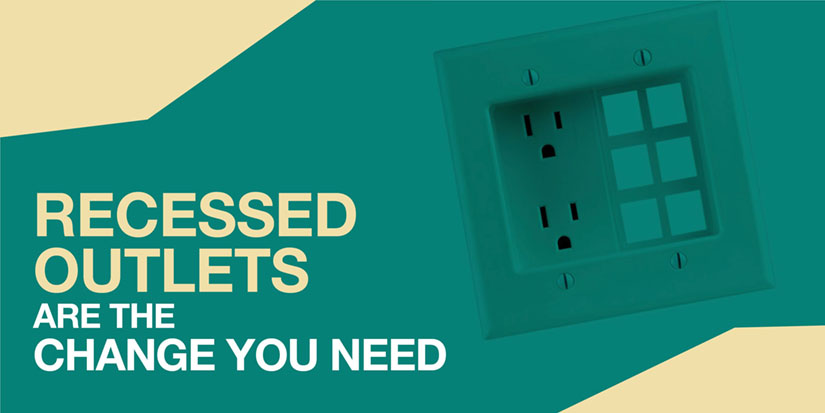
Mr. Electric highlights the benefits and installation steps for recessed outlets, which offer a sleek, space-saving solution for modern homes.
|
Protruding plugs can create electrical eyesores, leaving furniture and appliances floating, robbing space, and making for strange views. Fortunately, you can quickly and easily solve these issues with the help of recessed outlet technology.
Keeping a low profile
Today’s electrical outlet technology is light years ahead of the standard outlets you grew up with, providing an array of benefits you’ve likely overlooked. Recessed outlets are among this technology, with low-profile, inset frames that set deeper into the wall to prevent plugs from protruding, protecting cords from damaging bends and crimps, to aid in both the form and function of your home’s interior design scheme.
Make a positive change in your home with recessed outlets
Recessed electrical outlet covers have many practical design features and come in an array of styles for seamless integration into your home. Choose from a variety of finishes, including paintable styles, two, four, or six plug receptacle designs, and even those with added ports (openings) for managing power, audio, video, phone, and data cords.
- Use recessed outlets behind furniture…
Finally sliding sofas, hutches, dressers, bookshelves, desks and more flush against the wall, losing that floating furniture feel and gaining space. - Add a recessed outlet for your flat-screen TV…
For a flat, photo frame-like mount. Choose a model with added ports to manage cables and wires easily in a single, hidden location. - Help your kitchen better cater to you…
Hiding plugs and wires and pushing appliances up against the backsplash or wall to make the most of counter space. - Maximize space in small baths…
And keep plugs and outlets out of the splash zone. - Make your office less of a hazard…
Tucking all those pesky cords out of the way and into a single location. - Take advantage of recessed outlets outdoors…
Losing those ugly bubble outlets you’ve been stuck with for so long.
How to install a recessed outlet:
- Turn off the circuit to the existing outlet at your electrical box.
- Double check the outlet is off by trying to plug-in a working device.
- Remove the screws attaching the outlet cover, then remove the cover.
- Unscrew and remove the outlet itself, carefully detaching wires.
- Hold the new, recessed outlet box up to the outlet, marking its larger location. Be certain it is level and aligned with the stud.
- Follow your marks with a utility knife, making a clean exterior cut. Follow with the drywall saw to carefully trim to size. Be extremely careful not to cut/damage any wires.
- Using a flathead screwdriver or other appropriate tool, gently pry off the old plastic electrical box, prying it off of the stud.
- Insert the new box, threading the existing wiring into the top or bottom clamp and gently pulling through. Once the box is set in the opening, tighten the retaining tabs.
- Wire in the new outlets, first trimming the old wire, and using your wire cutters to strip the sheathing to about ¾” to expose clean, undamaged wire. Bend the end of the wire to form a u-hook. The white wire attaches to the silver screw on the side of the outlet. The red or black wire to the brass crew. The remaining ground wire to the green screw. Pinch each u-shaped end securely around the screw. Tighten the screw, then fold the wires into the box.
- Secure the receptacle, followed by the cover plate and trim. You can now safely restore power.
Update your home and make life easier with the clean, simple design of recessed outlets. ContactMr. Electric® and uncover the latest in outlet technology today.

